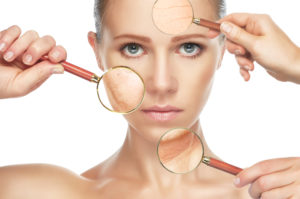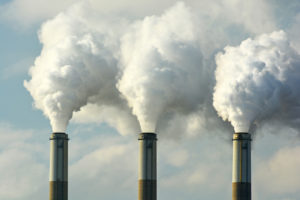
There are three main external threats to your skin these are ultraviolet light, climate, and environmental stress and pollution.
As well as keeping your skin from internal factors it is also important to take care of your skin from the outside. With normal physiological functions, the skin becomes oily and sweat is released onto the skins surface. The skins natural oil is called sebum and it can easily build up and block pores and hair follicles.
So, what are the external factors and who do they affect our skin?

Ultraviolet light.
Although ultraviolet light is a threat to the skin it does have some positive effects; one being it has the ability of stimulating the source of vitamin D, this is absorbed into the blood stream and helps to nourish along with helping to maintain our bone tissue.
Ultraviolet light is divided into many bands, the most important to skin tanning are UVA and UVB. UVA stimulates the melanin in skin to produce a rapid tan. UVA enters deep into the dermis where it can cause premature aging of the skin. Free radicals are formed, these are highly reactive molecules which cause skin cells to be corrupted. Free radicals disrupt the production of collagen and elastin, these are the fibres that keep the skin with good strength and elasticity.
UVB stimulates the production of vitamin D, this gives your skin a lasting tan. UVB is partially absorbed by the atmosphere, UVB causes the thickening of the corneum layer and causes sunburn. When sunburn happens, the skin becomes red as the cells are damaged and may become blistered; UVB also can implicated in skin cancers.
It is important that you use sunscreens or products that contain SPF as they protect your skin from absorbing UV light, most products now contain SPF factors in them, so you may be protected with not even knowing.
It can take years to show effects of damage to the skin but once they start showing you the effects are irreversible.
Climate.
The climate has several effects on the skin theses are:
- Sebum production – when the skin is exposed to cold weather it produces less sebum is produced. If the skin has less sebum that means the skin will reduce is moisture leaving the skin dry.
- Perspiration – in very hot weather more moisture is lost as perspiration, perspiration increases to cool the skin and regulate your body temperature.
- Humidity – humidity of surrounding areas is also to blame for moisture loss. Hot humidity will draw moisture from your skin.
- Extremes of temperature- alternating between hot and cold often leads to the formulation of broken capillaries. These appear as fine red lines or discolouration on the skin.
- Stratum corneum – the cells of stratum corneum multiply with repeated unprotected exposure to the climate as the body’s defence.
The damaging effects caused by the climate can be reduced by using protective skincare preparations such as moisturiser.
Environmental stress and pollution

Further cases of moisture loss are caused by harsh alkaline chemicals such as detergents and soaps but also factors such as air conditioning
and central heating. Harsh alkaline chemicals remove sebum from the skins surface.
Environmental pollutants such as lead, and mercury can pile up in the body. The formulation of dangerous chemicals can attack proteins in the cells. These pollutants can find their way into food throughout polluted water, rain and dust.
Air pollution, involving carbon from smoke, chemical discharges from factories and fumes from car exhausts should be removed by deep cleansing.